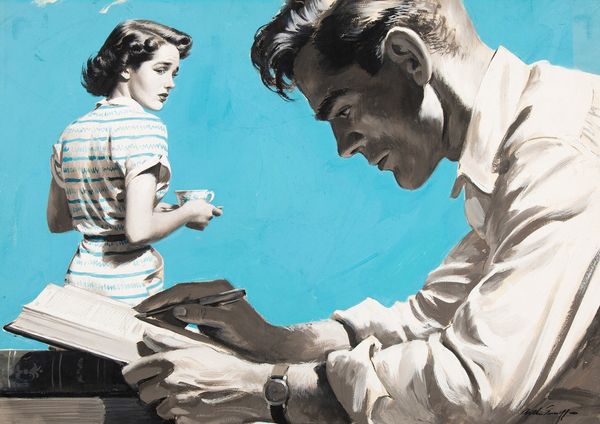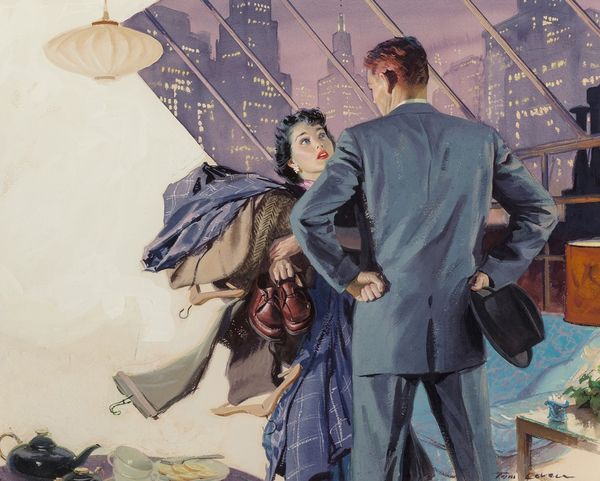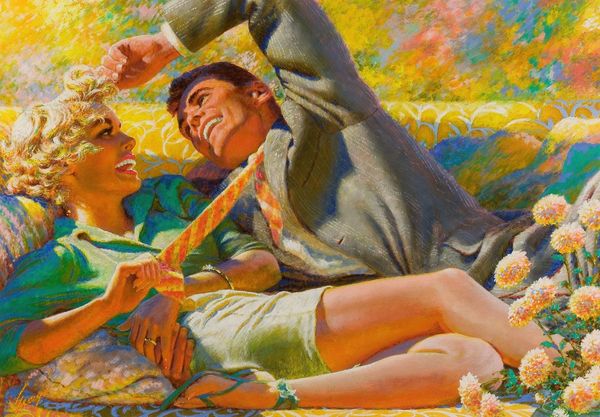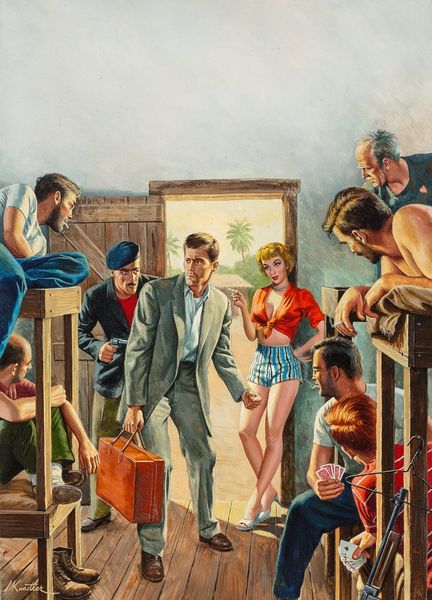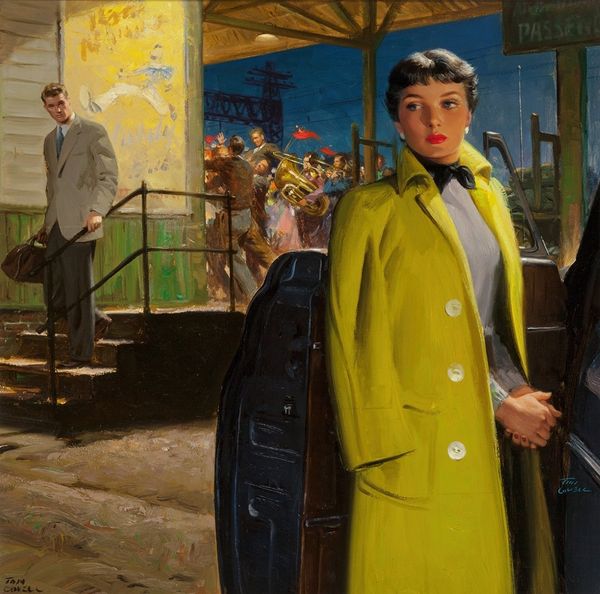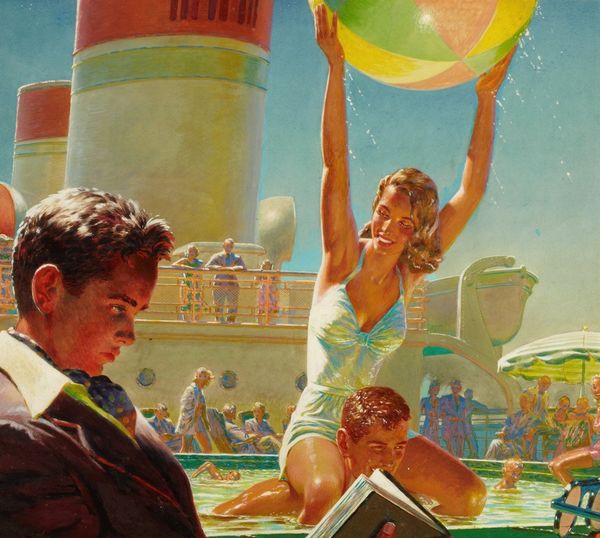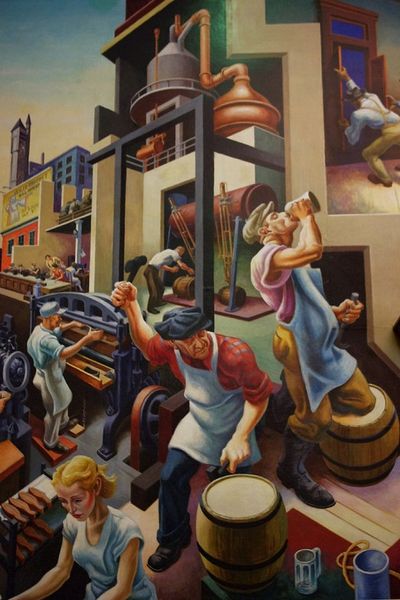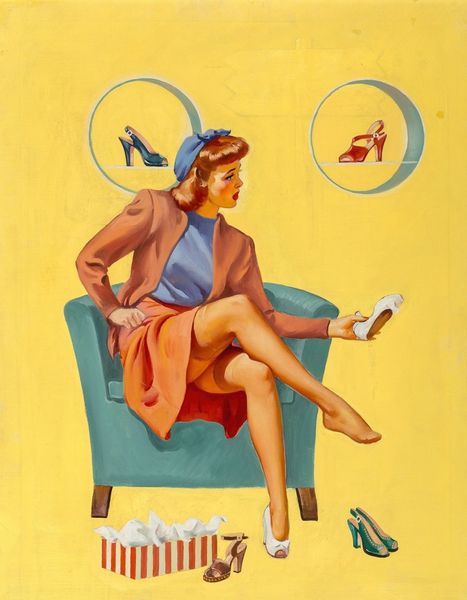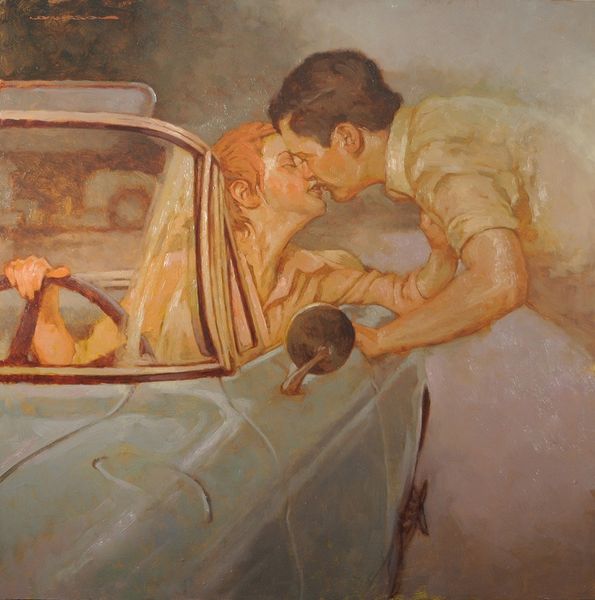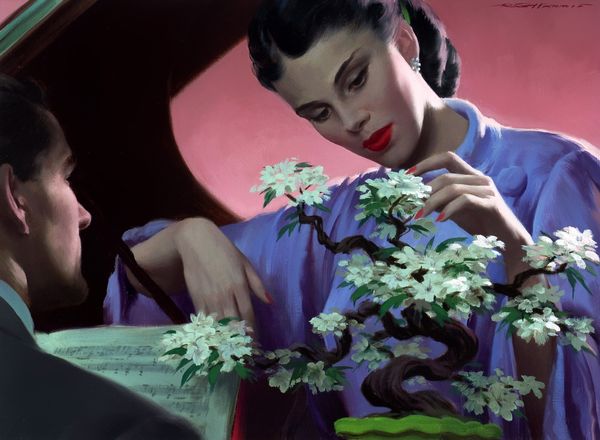
oil-paint
#
portrait
#
oil-paint
#
figuration
#
oil painting
#
genre-painting
#
portrait art
#
modernism
Copyright: Modern Artists: Artvee
Editor: Here we have "One Date with the Boss," an oil painting from 1953 by Edwin Georgi. The scene seems quite charged – there’s a woman with a rather knowing look, another dripping with furs, and then a man tending to the first woman's leg. It feels…awkward, to say the least. How do you interpret this work? Curator: Indeed, "awkward" captures much of its tension. Considering the context of the 1950s, this image speaks volumes about power dynamics, and what constituted acceptable behavior in professional settings. Look at the framing – it’s like a stage, with the woman being the spectacle. Doesn't that positioning strike you as indicative of its time, revealing particular social structures? Editor: Yes, I see what you mean. It's staged and performative. Was this image likely meant as a critique or endorsement of the behavior depicted, do you think? Curator: That's the complex part. It likely wasn’t conceived as a blatant critique. Images like this were often ambiguous, reflecting existing power imbalances rather than challenging them directly. The knowing glance could be read as complicity, not necessarily resistance. Think about who was consuming this type of imagery, and how it reinforced specific societal roles. Editor: So, even if it's uncomfortable for us to view now, it could have been considered relatively normal, or even desirable, at the time? That’s a bit unsettling. Curator: Precisely. It’s a reminder that art is a product of its time and that what seems "normal" is culturally constructed. Considering it as portrait art under a Modernism art style highlights a focus on contemporary themes but does little to remove the tension we see. This picture underscores how museums, galleries, and sociopolitical powers contribute to shaping the artwork's production and reception. It’s not just about the individual scene but also the system that allowed it to occur. Editor: This has been really insightful. Thanks! It really shifted my understanding of the piece. Curator: My pleasure. Remember, viewing art through a historical lens opens up conversations about what imagery normalizes, obscures, and, perhaps, tries to justify within society.
Comments
No comments
Be the first to comment and join the conversation on the ultimate creative platform.
